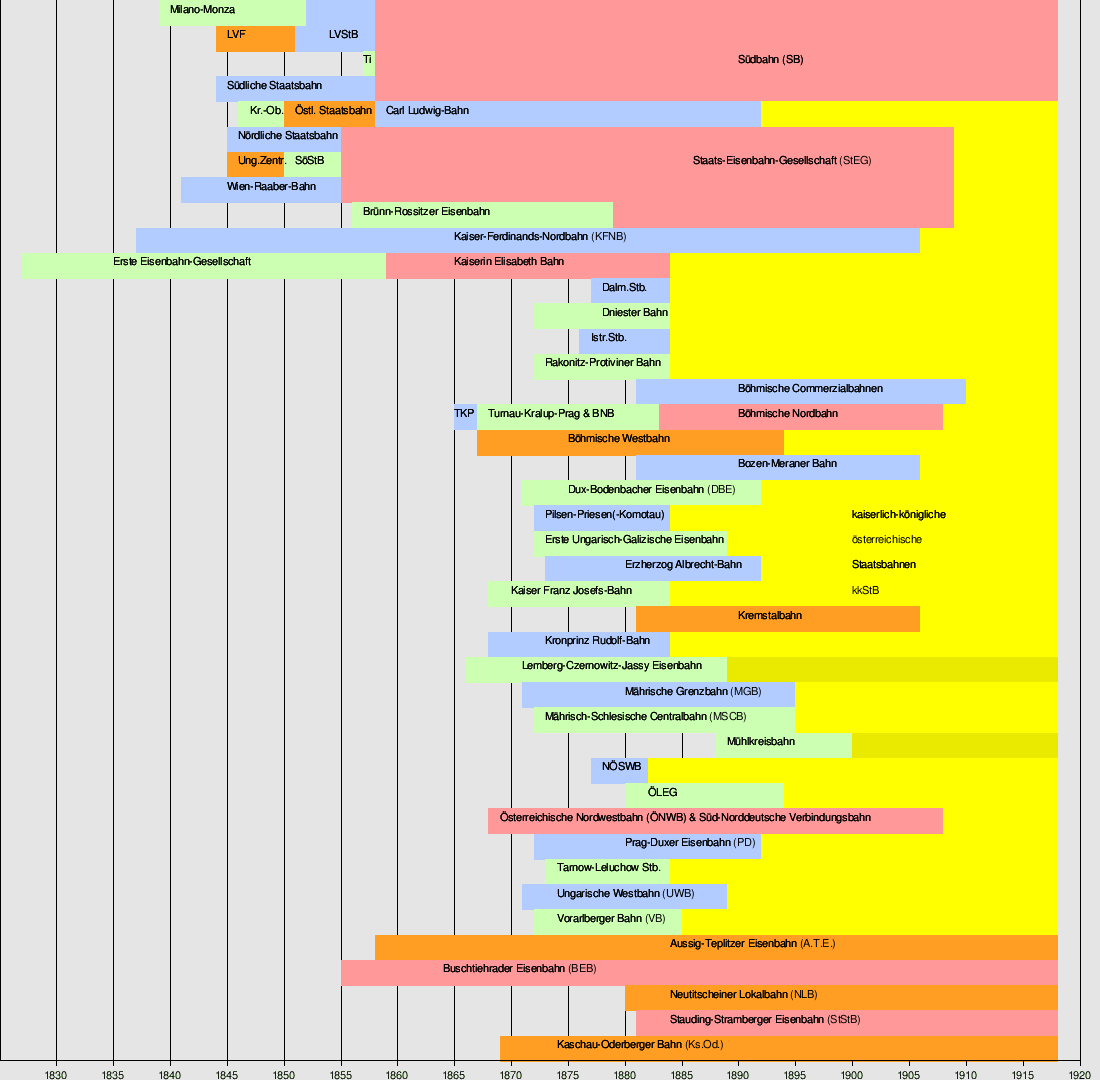Imperial Royal Austrian State Railways
The Imperial Royal State Railways (German: k.k. Staatsbahnen, abbr. kkStB, from 1915: k.k. österreichische Staatsbahnen) was the state railway organisation in the Cisleithanian (Austrian) part of Austria-Hungary.
Contents |
Early history
The introduction of railway traffic in the Austrian Empire had been pushed by pioneers like physicist František Josef Gerstner (1756-1832), who advocated a railway connection from the Vltava basin across the Bohemian Massif to the Danube river. After in 1810 a first 22 kilometres (14 mi) long horse-drawn railway line was built at the Eisenerz mine in Styria for the transport of iron stones, in 1832 a wagonway between Austrian Linz and České Budějovice (Budweis) in Bohemia opened. It was 128.8 kilometres (80.0 mi) long and was the second interurban railway in continental Europe (after the French Saint-Étienne–Andrézieux line opened in 1827). The southern continuation from Linz to Gmunden was finished in 1836.
The first section of a new steam locomotive railway from the Austrian capital Vienna to Kraków in the Kingdom of Galicia and Lodomeria operated by the Emperor Ferdinand Northern Railway company opened in 1837. Designed by Franz Xaver Riepl, it was financed by the banker Salomon Mayer von Rothschild. After intial hesitation, the Austrian state took a keen interest in railways, and in late 1854, 994 kilometres (618 mi) out of 1,443 kilometres (897 mi) of railway lines were state owned (almost 70%). However the Southern Railway from Vienna to the seaport at Trieste via the Semmering Pass opened in 1857 was operated by the private Austrian Southern Railway company.
After 1854, because of financial crisis in the Empire, the railways in the Austrian part were sold at prices cut to the bone, many of them, like the Imperial Royal Privileged Austrian State Railway Company to French investors. Concessions for new private companies were granted.
After the Austro-Hungarian Compromise of 1867, the Transleithanian (Hungarian) lines were nationalized as the Hungarian State Railways (MÁV). The Long Depression, started by Vienna stock market crash in 1873, resulted in the bankruptcy of several Austrian railways, and the state took them over.
Austrian state railways
At the end of 1884 the state railway network covered 5,103 km. On July 1, 1884 the "k.k. Generaldirektion der Staatsbahnen" ("Imperial General Directorate of the State Railways") was founded; this was the birth of the "kaiserlich-königliche Staatsbahnen" (abbreviated as "kkStB" or "k.k.St.B.").
By nationalizing other companies or taking over their traffic the company obtained a practical monopoly in railway transport. "Südbahn" (SB, southern railway) was the only major company that remained private until the end of Empire. In 1914, of a total of 22,981 km of railway tracks on Austrian territory, 18,859 (82%) were state owned.
After the end of the First World War the vehicle fleet and infrastructure of kkStB were divided among state railway companies of successor states: Czechoslovak State Railways (ČSD) in Czechoslovakia, Deutschösterreichische Staatsbahnen (DÖStB) in Austria (in 1919 renamed to Österreichische Staatsbahnen, ÖStB, in 1921 renamed to Bundesbahn Österreich, BBÖ), and others.
Timeline

See also
External links
|
|||||||||||||||||||||||